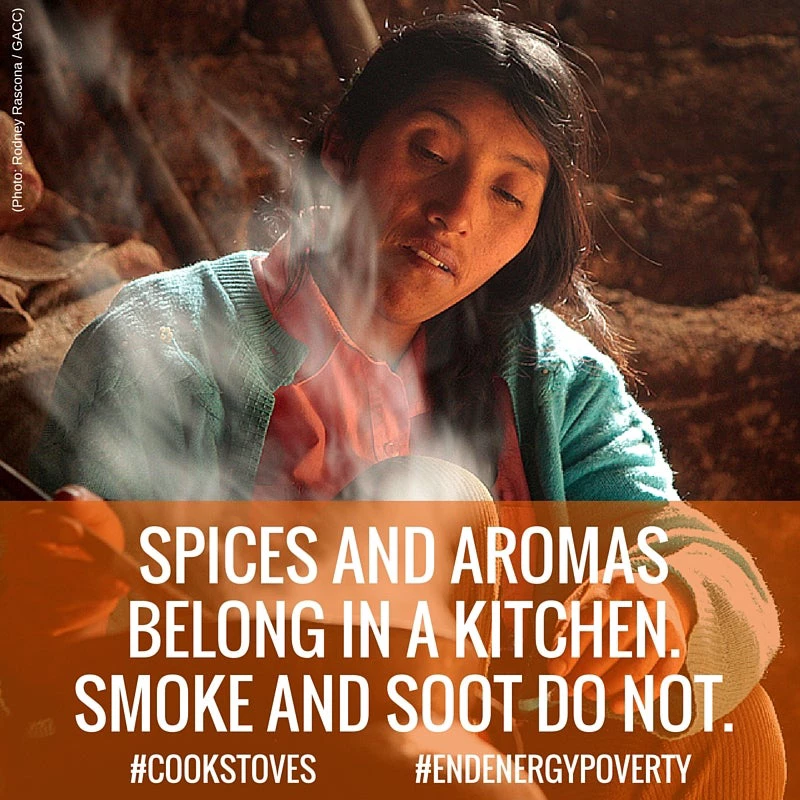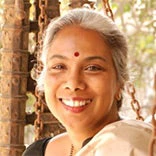Also available in: Español | Français | العربية | 中文 | हिंदी

Really – let’s.
It’s a fact: Indoor air pollution from cooking with solid fuels including wood, charcoal, coal, animal dung, and crop waste in open fires and traditional stoves is the fourth leading cause of death in the world, after heart and lung disease and respiratory infection.
Nearly 2.9 billion people, a majority of whom are women, still cook with dirty, smoke and soot-producing cookstoves and solid fuels. That’s more people using these dangerous appliances than the entire populations of India and China put together.
This has to change. And change is happening as I heard from the various discussions that took place in Accra, Ghana at the Clean Cooking Forum 2015 last week. Hearing the Minister of Petroleum of Ghana and the Deputy Minister for Gender and Development, I realize that the ambition to provide clean cookstoves and cleaner fuels to the households who need it most is definitely there. But transforming ambition into reality is a challenge. This is true not just in Ghana but in many other parts of the world.
I have been thinking a lot about this lately, especially as we come up on the climate change conference ( COP21) in Paris, where world leaders will gather to reach a universal agreement on mitigating the effects of climate change. Adopting clean energy sources is key to reach that goal. To that end, the UN’s sustainable energy goal (SDG7) that aims to ensure access to affordable, reliable, sustainable and modern energy for all also aims for bringing clean cooking solutions to the 2.9 billion who do not have it today.
One would think it would be easy to appreciate the benefits of switching from traditional stoves that use kerosene, firewood or cow dung to clean cooking fuels and stoves. Women and young girls often walk for hours to gather firewood or buy other solid fuels and haul it all back home in time to cook a simple meal. However, accessibility of these fuels, lack of information of the adverse health and other impacts, affordability issues and the reach of low-emission cookstoves and cleaner fuels make the conversion to clean cooking solutions challenging.
In some countries, governments are providing stoves that use liquefied petroleum gas (LPG) or other liquid fuels that burn cleaner. As those working in the field know, this is not enough because numerous questions follow. How are these families going to get the fuel for these stoves? And can they afford it for everyday cooking? Is it safe? What happens if a valve or pipe or cylinder is faulty?
Our experience, and that of many others in the field show that educating users, including men who often decide on household expenditures, is key. This is an area where having women who are themselves users of cleaner cooking promote these solutions can make a difference. It also empowers women to become entrepreneurs and enhance their own livelihood while improving that of others.
Another challenge to consider is targeting subsidies, which are usually put in place to help the poor, but are frequently not targeted well and miss their objective.
Besides being in line with SDG7, clean cooking solutions also lay a pathway for achieving other targets, like the sustainable energy goal on health (SDG3) and gender (SDG5), as well as the World Bank’s fundamental goal of ending extreme poverty.
The World Bank is doing its part. For example, working closely with of the Lao People’s Democratic Republic's Ministries of Health and Energy, the World Bank is supporting a pilot project in Laos to develop an innovative approach to attract private sector to finance dissemination of a near-smokeless cookstove model through health impact results-based financing. In India, we are working to develop partnerships with self-help organizations like SEWA, to expand the role of women in the distribution chain. And in Bangladesh, a project aims to disseminate one million improved cookstoves and 20,000 biogas digesters over a five-year period by working with partnership organizations who employ local female agents to conduct awareness raising activities on the benefits of efficient and clean cooking.
And, as we approach COP21 in December, I can’t help but think we can do even more. It’s bad enough that more than 4 million people die every year because of indoor air pollution, but let’s remember dirty cooking is also a contributor to climate change. Helping poor households get access to and adopt more efficient, lower-emission cooking solutions will also have climate benefits.
The World Bank is working with Berkeley Air Monitoring Group and Scripps Institution of Oceanography at University of California at San Diego to monitor and report stove use, kitchen air quality, black carbon emissions and personal exposure to indoor air pollutants. The goal is to demonstrate these technologies in India and Laos to generate field-based evidence of emission reduction levels that could have substantial health improvement outcomes. In the process, we can also help mitigate climate change.
Let us challenge ourselves to bring clean cooking to the front burner and address the urgent needs of 2.9 billion people. Spices and aromas belong in a kitchen. Smoke and soot do not.


Join the Conversation